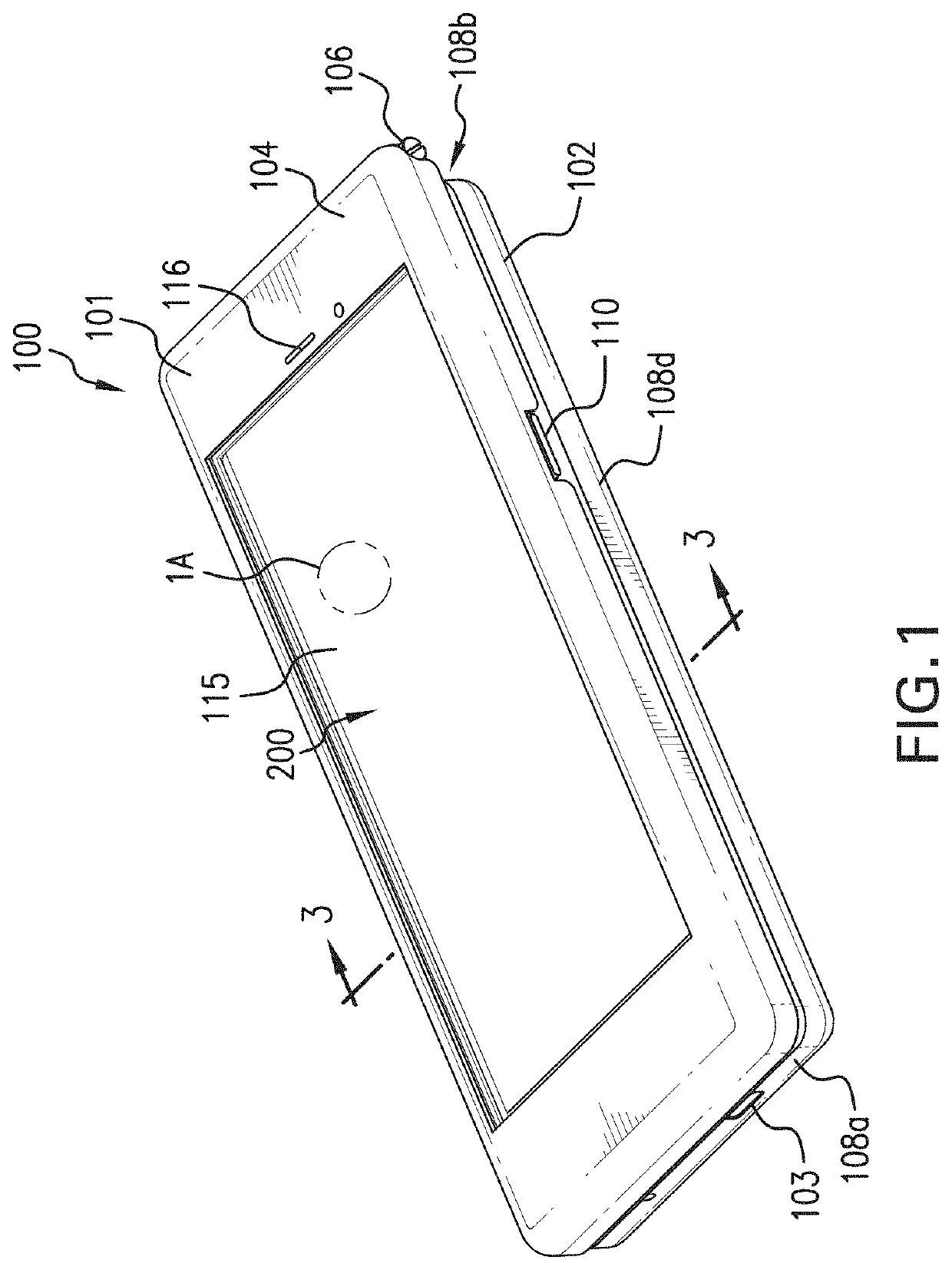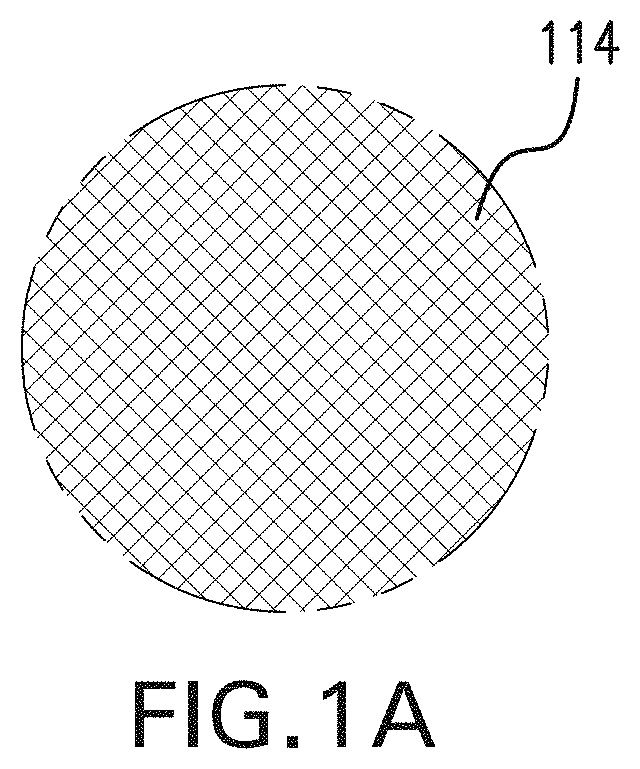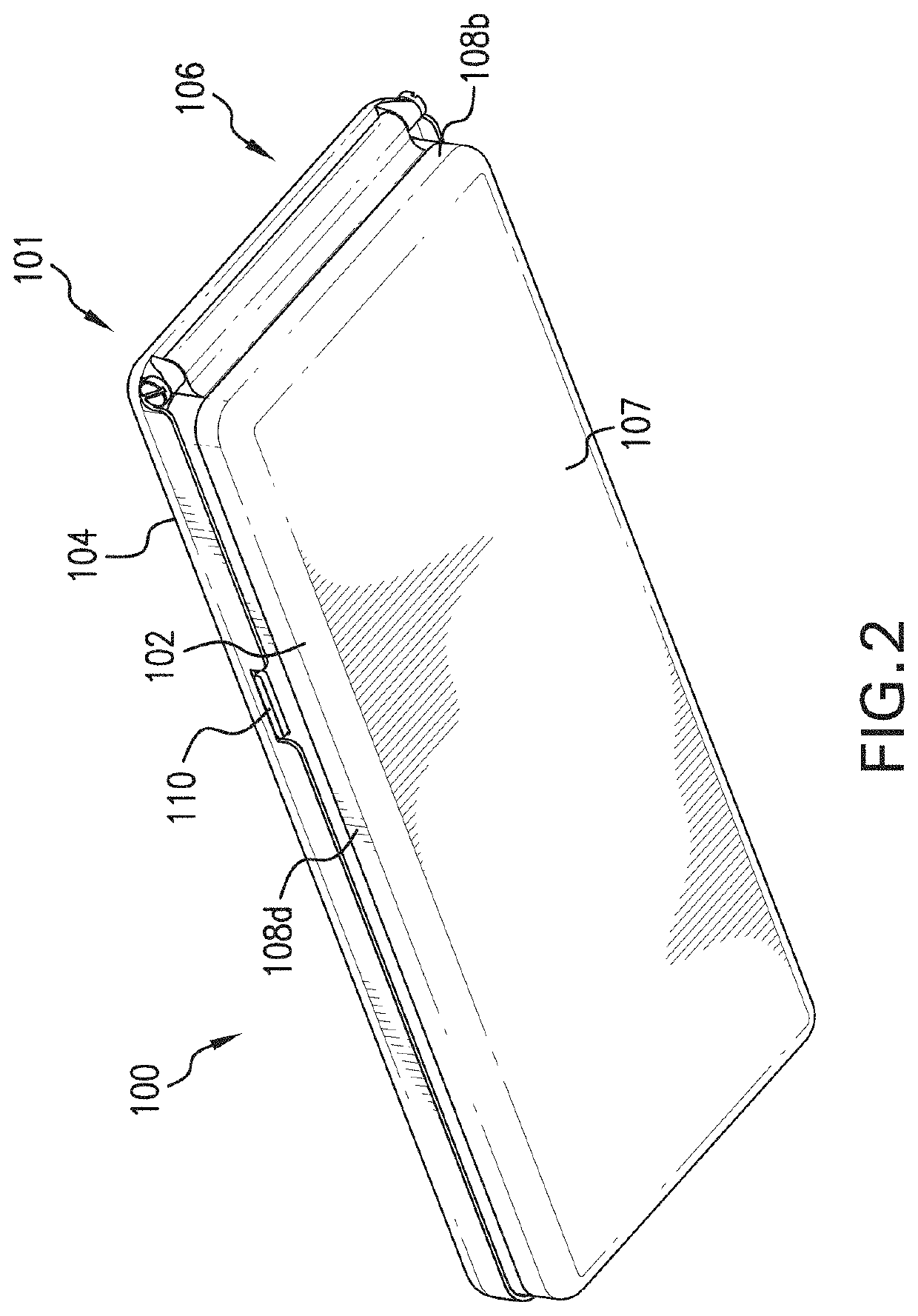Personal electronic device emp protective enclosure
a protective enclosure and electronic device technology, applied in the direction of electrical equipment, emergency protective arrangements for limiting excess voltage/current, transmission, etc., can solve the problems of emp-optimized nuclear devices, low yield detonation, fearsome threats, etc., to reduce radiation leakage path, enhance display clarity, prevent moiré patterns
- Summary
- Abstract
- Description
- Claims
- Application Information
AI Technical Summary
Benefits of technology
Problems solved by technology
Method used
Image
Examples
case 100
[0028]Case 100 comprises of an enclosure 101 with a hinged “visor” that completely surrounds mobile device 200. This hinged “visor” mechanically and electrically connected to the Faraday cage of enclosure 101 has a portion that aligns with the display where there is a cutout which fully reveals the display of mobile device 200. The cutout contains an optically-transmissive fine wire mesh which provides 80 db of radio attenuation. The mesh is sandwiched between two sheets of transparent plastic for damage and wear protection, with the mesh bonded to the grounded visor frame. Because the standard input entry touchscreen for mobile device 200 is capacitive, it will not function through a grounded mesh screen. Therefore, the user must open the visor to use the touchscreen of mobile device 200. Opening the visor, however, exposes mobile device 200 to EMP damage, requiring the user to take care where and when he opens it. This tradeoff recognizes that most use in emergency conditions is r...
PUM
 Login to View More
Login to View More Abstract
Description
Claims
Application Information
 Login to View More
Login to View More - R&D
- Intellectual Property
- Life Sciences
- Materials
- Tech Scout
- Unparalleled Data Quality
- Higher Quality Content
- 60% Fewer Hallucinations
Browse by: Latest US Patents, China's latest patents, Technical Efficacy Thesaurus, Application Domain, Technology Topic, Popular Technical Reports.
© 2025 PatSnap. All rights reserved.Legal|Privacy policy|Modern Slavery Act Transparency Statement|Sitemap|About US| Contact US: help@patsnap.com



